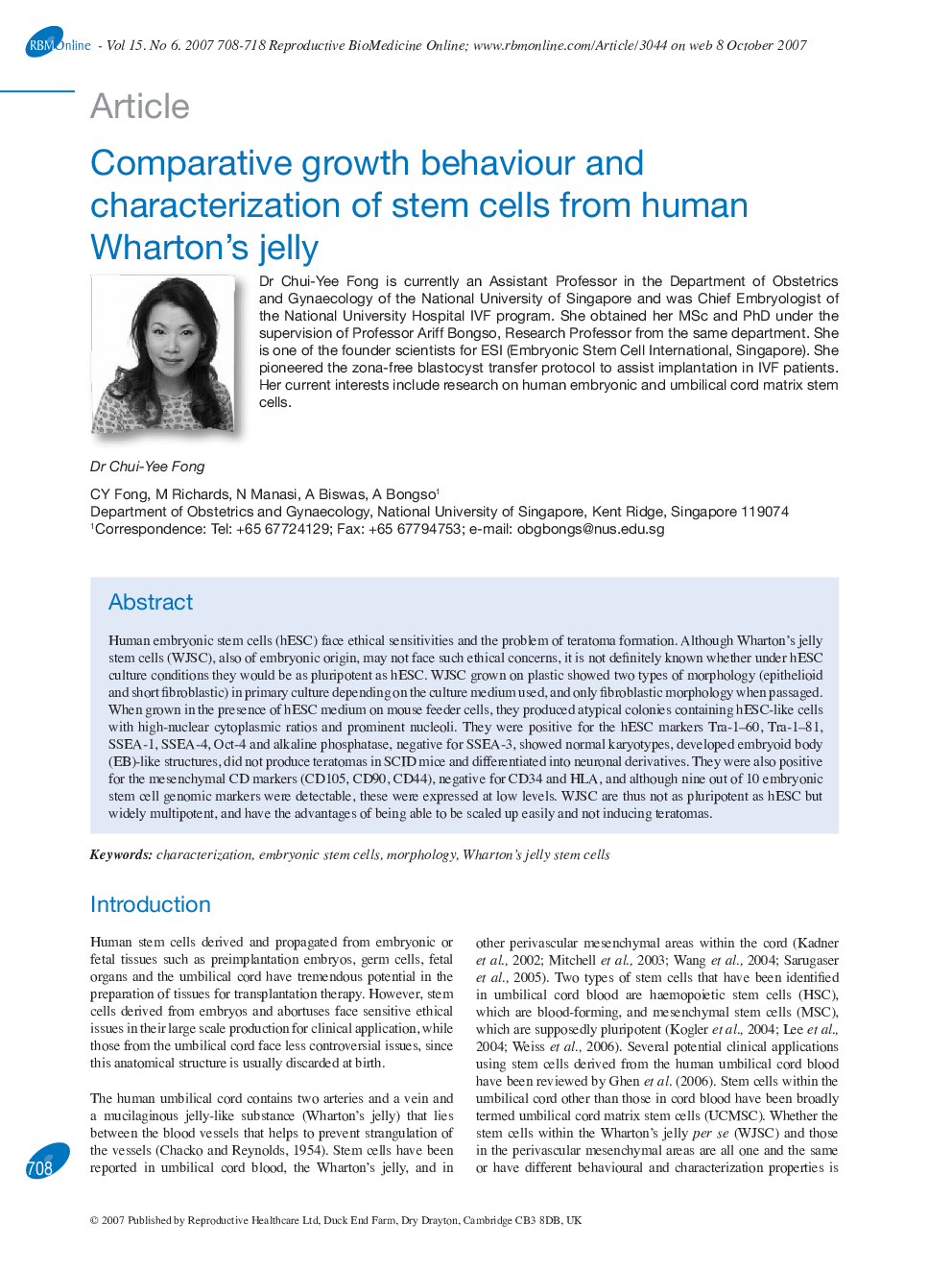| Article ID | Journal | Published Year | Pages | File Type |
|---|---|---|---|---|
| 3972869 | Reproductive BioMedicine Online | 2007 | 11 Pages |
Human embryonic stem cells (hESC) face ethical sensitivities and the problem of teratoma formation. Although Wharton's jelly stem cells (WJSC), also of embryonic origin, may not face such ethical concerns, it is not definitely known whether under hESC culture conditions they would be as pluripotent as hESC. WJSC grown on plastic showed two types of morphology (epithelioid and short fibroblastic) in primary culture depending on the culture medium used, and only fibroblastic morphology when passaged. When grown in the presence of hESC medium on mouse feeder cells, they produced atypical colonies containing hESC-like cells with high-nuclear cytoplasmic ratios and prominent nucleoli. They were positive for the hESC markers Tra-1–60, Tra-1–81, SSEA-1, SSEA-4, Oct-4 and alkaline phosphatase, negative for SSEA-3, showed normal karyotypes, developed embryoid body (EB)-like structures, did not produce teratomas in SCID mice and differentiated into neuronal derivatives. They were also positive for the mesenchymal CD markers (CD105, CD90, CD44), negative for CD34 and HLA, and although nine out of 10 embryonic stem cell genomic markers were detectable, these were expressed at low levels. WJSC are thus not as pluripotent as hESC but widely multipotent, and have the advantages of being able to be scaled up easily and not inducing teratomas.
